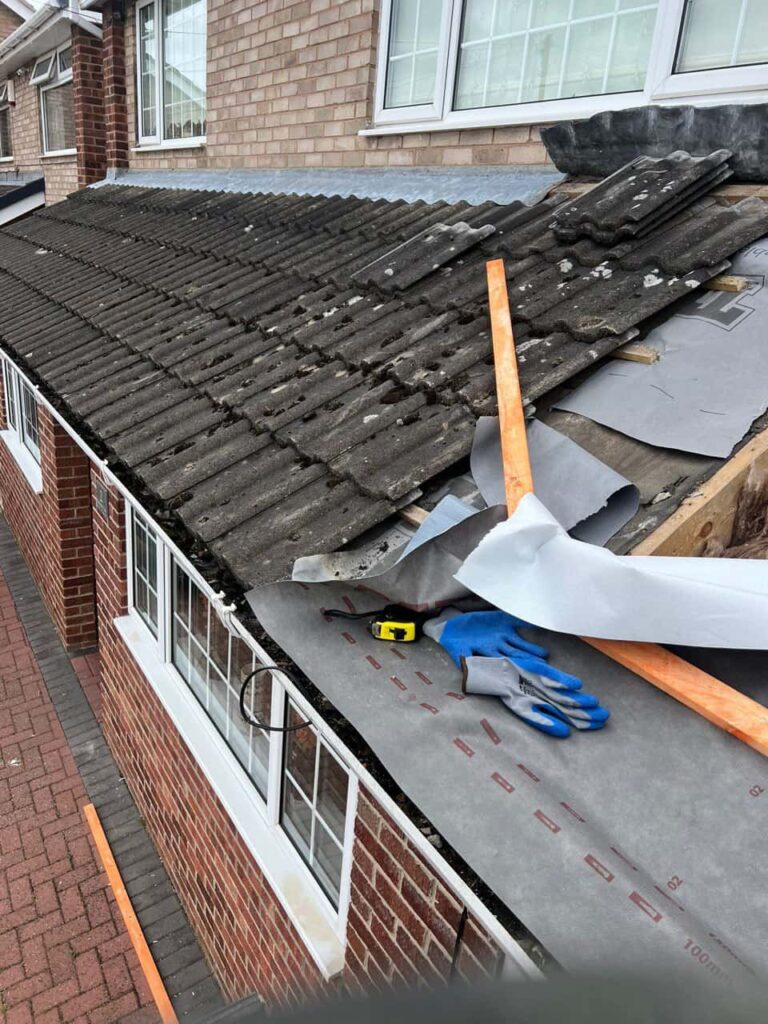Lead flashing is an essential component of any roofing system, designed to create a watertight seal around vulnerable areas such as chimneys, vents, and roof junctions. When installed and maintained properly, lead flashing provides long-lasting protection against water ingress. However, when issues arise with your flashing, it can lead to costly water damage and other roofing problems. At Sedgley Roofing Repairs, we’ve seen how minor flashing issues can cause significant damage if not addressed quickly.
In this blog, we’ll explore why your lead flashing may not be working as it should and how to ensure it’s repaired correctly.
1. Improper Installation
One of the most common reasons why lead flashing fails is due to improper installation. Lead flashing requires precise fitting and sealing to ensure that it provides full protection from water ingress. If flashing is cut too short, not sealed properly, or not installed with the correct overlaps, it can allow water to seep through the gaps.
At Sedgley Roofing Repairs, we ensure that all flashing installations are carried out to the highest standards, using proper techniques to ensure a watertight seal. If your flashing was not installed correctly in the first place, it may need to be refitted by a professional.
2. Weathering and Age
Lead is a highly durable material, but over time, it can become weakened by prolonged exposure to the elements. The West Midlands’ changing weather, from heavy rain to freezing conditions, can cause lead flashing to expand and contract, eventually leading to cracks or splits. While lead itself has a long lifespan, its exposure to weather extremes can affect its integrity over the years.
Regular inspections and maintenance can help identify early signs of wear and tear. If your flashing is showing signs of deterioration due to weathering, it may need to be repaired or replaced.
3. Poor Adhesion or Loose Flashing
Lead flashing is typically fixed into position using adhesives or mortar, which can degrade over time. If the materials securing the flashing become loose, the flashing may move, creating gaps where water can penetrate. This is particularly common in areas where strong winds are prevalent, as they can dislodge poorly adhered flashing.
At Sedgley Roofing Repairs, we use high-quality materials and ensure that flashing is securely fixed in place to withstand all weather conditions. If your flashing has become loose, it’s crucial to have it re-secured as soon as possible to prevent water damage.
4. Corrosion
Although lead is resistant to rust, the materials surrounding it, such as nails, screws, or certain types of mortar, can corrode over time. Corroded fasteners can cause flashing to shift or become ineffective. Additionally, lead can develop a layer of oxidation, which, if left unchecked, may contribute to the flashing becoming brittle or damaged.
If you notice any signs of corrosion around your lead flashing, it’s important to have a professional assess the extent of the damage. Replacing corroded elements and treating the flashing can restore its effectiveness.
5. Improper Repairs
If your lead flashing has been repaired in the past but continues to cause issues, the repair work may not have been done to the correct standard. Temporary fixes, such as patching over cracks with sealant, may provide short-term relief but often fail to address the underlying problem. Over time, these makeshift solutions can lead to further damage, increasing the likelihood of leaks.
Proper repair involves more than just patching up the problem. At Sedgley Roofing Repairs, we assess the root cause of the issue and provide permanent solutions that ensure your flashing performs as it should.
6. How to Make It Right
If your lead flashing isn’t performing as expected, the best course of action is to schedule an inspection with a professional roofing contractor. An expert can determine the cause of the problem and recommend the most appropriate solution, whether it’s a simple repair or a complete replacement.
At Sedgley Roofing Repairs, we specialise in lead flashing repairs and replacements, ensuring that your roof is fully protected from water ingress. Here’s how we make sure your lead flashing is working as it should:
- Comprehensive Inspection: We thoroughly inspect the condition of your flashing and identify any areas of concern, from improper installation to weather damage.
- Tailored Repairs: We provide a solution that addresses the specific problem, whether it’s resecuring loose flashing, replacing damaged sections, or refitting poorly installed flashing.
- Quality Materials: We use top-quality lead and fasteners to ensure that your flashing is durable and long-lasting, giving you peace of mind that your roof is protected.
- Preventative Maintenance: We offer ongoing maintenance services to ensure that your flashing remains in good condition, preventing future issues from arising.
Conclusion
Lead flashing is a crucial component of your roofing system, but when it’s not working correctly, it can lead to serious water damage and costly repairs. Whether due to improper installation, weathering, or poor maintenance, it’s important to address flashing issues as soon as they’re detected. At Sedgley Roofing Repairs, we provide expert lead flashing repairs and installations in Sedgley, West Midlands, ensuring your home stays watertight and protected for years to come.
If you’re experiencing problems with your lead flashing or need a professional inspection, contact Sedgley Roofing Repairs today. Our experienced team is ready to help you restore the integrity of your roof and protect your home from leaks and damage.
Call us on: 01902 943 599
Click here to find out more about Sedgley Roofing Repairs
Click here to complete our contact form and see how we can help with your roofing needs.

